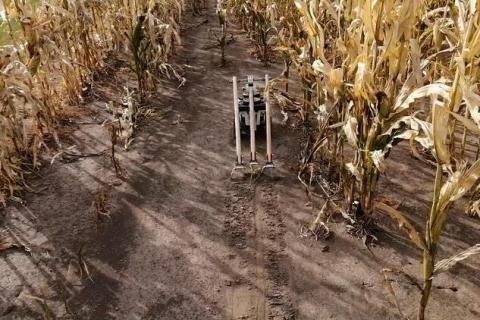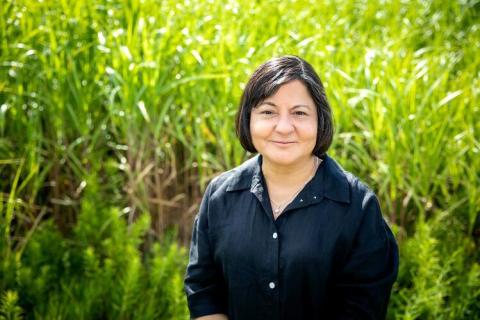Last month, the United States Environmental Protection Agency (EPA) published their 2024 Water Affordability Needs Assessment Report. Research from professor Diego Cardoso played a pivotal role in shaping the EPA's Water Affordability Needs Assessment report to Congress, which found that 12.1-19.2 million U.S. households lack affordable water access. The EPA incorporated novel methods for household-level affordability analysis developed by Diego Cardoso and Casey Wichman as well as their published dataset and procedures for matching water rates to census demographic data.
EPA report to Congress uses data and methods from CEOS researcher

New Illinois study explores adoption of robotic weeding to fight superweeds

Most corn and soybean fields in the U.S. are planted with herbicide-resistant crop varieties. However, the evolution of superweeds that have developed resistance to common herbicides is jeopardizing current weed management strategies. Agricultural robotics for mechanical weeding is an emerging technology that could potentially provide a solution. A new study from the University of Illinois Urbana-Champaign looks at the types of farmers and fields more likely to adopt weeding robots and at what stage of resistance development.
Read more in this ACES News Release...
Transition to a circular bioeconomy requires getting prices right

Conventional food and agricultural production systems employ a linear “take, make, waste” approach: taking natural resources from the Earth to make food and fuel, generating waste that contaminates the soil and water, and emitting harmful pollutants.
More recently, a new model of production is gaining traction in the scientific and business community: a “circular bioeconomy” that reduces and recycles waste, transitions away from fossil fuels to renewable bio-based alternatives, and regenerates natural systems. This approach is critical for feeding and fueling the world’s growing population in environmentally sustainable ways.
Read more in this ACES News Release...
Atallah, Margenot named 2024-25 Emerging Research Leaders

ACES professors Shadi Atallah and Andrew Margenot are among 15 Illinois faculty selected for the 2024-25 Emerging Research Leaders Academy by the Interdisciplinary Health Sciences Institute. Designed for mid-career faculty to achieve research success, the program provides vital leadership and team science training to pursue large, multi-PI grants, lead campus research initiatives, enhance their own research programs, and ultimately position Illinois for research excellence.
Read more in this ACES News Release...
Tanzania fertilizer use increased after intervention, but changes were not sustained, study shows

Smallholder farmers in Sub-Saharan Africa tend to use very small amounts of fertilizer, limiting their crop productivity. A 2016 intervention in Tanzania increased farmers’ fertilizer use and their crop yields. However, a follow-up study from an international team of researchers found the 2016 effects proved temporary, and farmers have since reverted to baseline low rates of fertilizer use and low crop yields.
Read more in this ACES News Release...